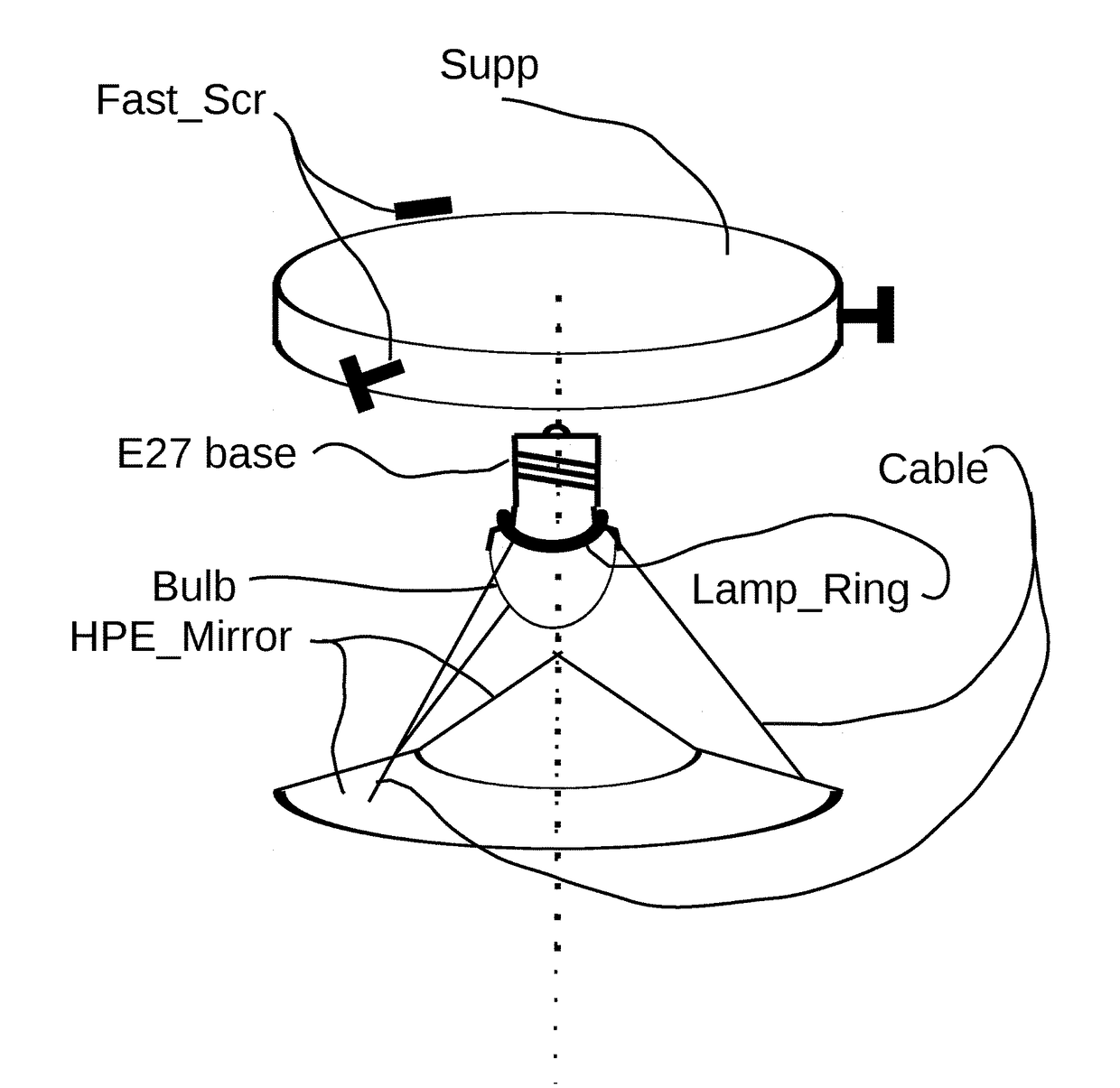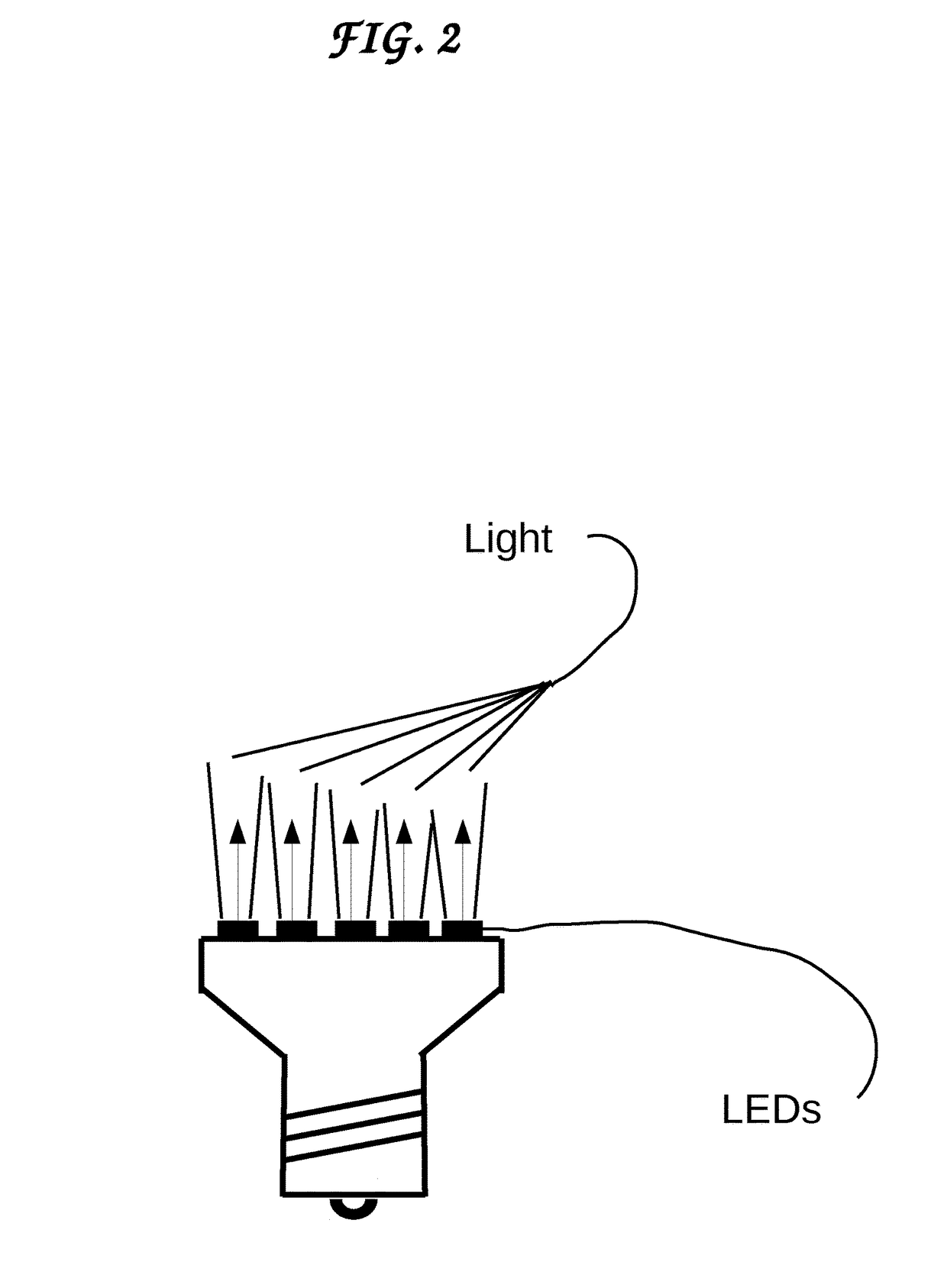Method and means for reflecting light to produce soft indirect illumination while avoiding scattering enclosures
- Summary
- Abstract
- Description
- Claims
- Application Information
AI Technical Summary
Benefits of technology
Problems solved by technology
Method used
Image
Examples
Embodiment Construction
[0063]The main embodiment of our invention is a device consisting of a reflecting surface (as a mirror) attached by convenient means (described in the sequel) in the vicinity of either an old-style luminary or to some of their LED-substitutes, as the dinosaur-type E27 incandescent bulb or some of its LED-substitutes, such that it is vertically mounted at the ceiling of a room, which makes that the luminary is vertically oriented pointing down to the floor, which is a common arrangement in homes. Variations of the supporting structure make the detailed description, which is for a ceiling mounted E27 style socket and electrical connection, to also work with other mountings.
[0064]We start the description of the main embodiment of our invention with the description of the existing device the our invention modifies. FIG. 1 shows an incandescent E27-type existing device, with a frosted glass enclosure insertable from underneath the E27 incandescent bulb upwards so as to completely surroun...
PUM
 Login to View More
Login to View More Abstract
Description
Claims
Application Information
 Login to View More
Login to View More - R&D
- Intellectual Property
- Life Sciences
- Materials
- Tech Scout
- Unparalleled Data Quality
- Higher Quality Content
- 60% Fewer Hallucinations
Browse by: Latest US Patents, China's latest patents, Technical Efficacy Thesaurus, Application Domain, Technology Topic, Popular Technical Reports.
© 2025 PatSnap. All rights reserved.Legal|Privacy policy|Modern Slavery Act Transparency Statement|Sitemap|About US| Contact US: help@patsnap.com



